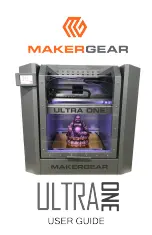
CHAPTER 4
4 - 10
II. TROUBLESHOOTING IMAGE FAULTS
If the cause of the symptom is identified as being an ‘image fault’ in reference to the flow chart
(Figure 4-1-1), isolate the cause as follows and take the appropriate action:
2 - 1
Light: The output is obviously too light.
2 - 2
Dark: The output is obviously too dark.
2 - 3
Blank: The output is blank.
2 - 4
Solid: The output is solid black.
2 - 5
Dots: The output has dots (as if splashed over the face).
2 - 6
Soiled back: The output has a soiled back.
2 - 7
Black vertical line: The output has black vertical lines.
2 - 8
Black horizontal line: The output has black horizontal lines.
2 - 9
Soiled face: The face of the output is soiled.
2 - 1 0 White spots: The output has images with white spots.
2 - 1 1 White vertical line: The output has white vertical lines.
2 - 1 2 White horizontal line: The output has white horizontal lines.
2 - 1 3 Fixing fault: The output has an image with an unstable toner deposit.
2 - 1 4 Distorted image: The output has a distorted image.
2 - 1 5 Image splash: The output has an image in which toner is splashed around characters.
2 - 1 6 Image wobble: The output has wobbling images.
2 - 1 .
L i g h t
<Possible Causes>
1 . The image density setting is not correct.
Action: Operate the external device, and adjust the image density.
2 . Open the upper cover in the middle of printing operation, and take out the EP cartridge. Check
the toner image on the surface of the photosensitive drum. If the toner image is not fully
transferred to the paper, go to step 5. If the tone image on the surface of the photosensitive
drum is too light as is, go to step 6. If the cartridge must be left outside the Printer after
checking the toner image, be sure to keep it in a protective bag or cover it with paper.
3 . The contact of the leaf spring for the transfer charging roller and the contact of the transfer
charging roller shaft are faulty.
A c t i o n : If dirt is found, clean the contact. If the problem is not corrected after cleaning, or
deformation or damage is found, replace the faulty part.
4 . The transfer charging roller is deformed/worn.
A c t i o n : Replace the transfer charging roller.
5 . The contact for the transfer charging roller on the DC controller PCB and the contact of the
leaf spring for the transfer charging roller are poor.
A c t i o n : If dirt is found, clean the contact. If the problem is not corrected after cleaning, or if
deformation or wear is found, replace the faulty part.
6 . The laser/scanner unit is faulty.
A c t i o n : Replace the laser/scanner unit.
7 . The DC controller PCB is faulty.
A c t i o n : Replace the DC controller PCB.
Summary of Contents for LBP-2000
Page 36: ...CHAPTER 1 1 30 ...
Page 38: ...CHAPTER 1 1 32 ...
Page 150: ......
Page 199: ...CHAPTER 4 4 48 D PCBs 1 2 3 4 5 Figure 4 9 4 Printer Paper Feeder ...
Page 203: ......
Page 206: ...APPENDIX A 2 ...
Page 222: ...CANONINC ...
















































